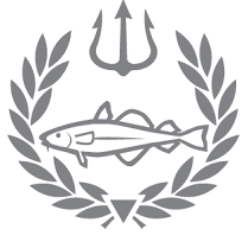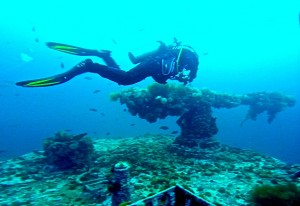On a moonless night in 1942, four British carriers — the Saganaga, Lord Strathcona, Rose Castle, and PLM 27 — succumbed to a German U-boat attack, while transporting iron ore in support of the war effort. Today, these wrecks lie in close proximity on the ocean floor, spanning depths ranging from 70 to 160 feet. After completing my peak performance buoyancy training, I felt ready to embark on my first wreck dive!
Taking a giant stride off the stern of the dive boat, we began our descent. Out of the blue emerged the ghostly silhouette of the Saganaga wreck. The anchor, catapulted midship during the attack, still stood upright on the deck as if frozen in time. Swimming the length of the ship, we marveled at the snow-white anemones and vibrant green urchins adorning the hull. With our tanks filled to 3,000 PSI of nitrox, we adhered to the rule of thirds and turned back at 2,000 PSI to ensure a safe ascent. During our three minute decompression stop, I spotted a red lion’s mane jellyfish pulsating through the water column — one of the largest jellyfish species in the world.
After our surface interval, we embarked on a second dive closer to shore, descending to approximately 35 feet. At this depth, we encountered a gaping crevice in the bedrock, teeming with arctic marine life from red sculpins to lumpsucker fish. It was carved by retreating glaciers during the last ice age, and when sea levels rose, the ocean flooded in. Now adorned with colonies of mussels, we watched as sea stars, each the size of dinner plates, slowly crawled over the mussels in search of a meal. Upon surfacing, we returned to the boat, brimming with excitement and exchanging high fives after such an incredible dive.


